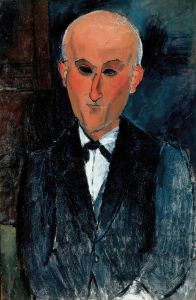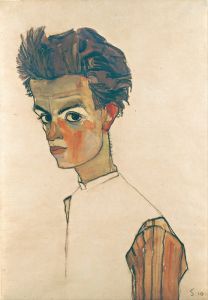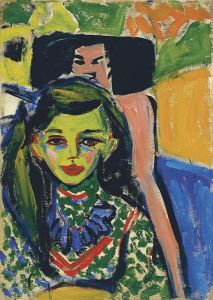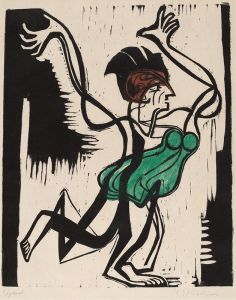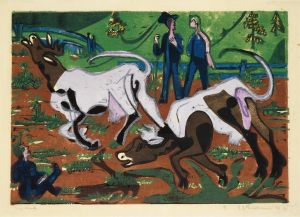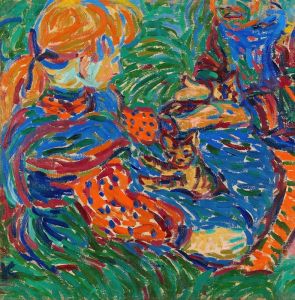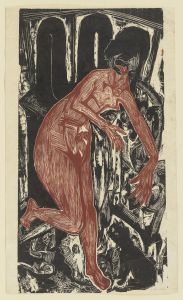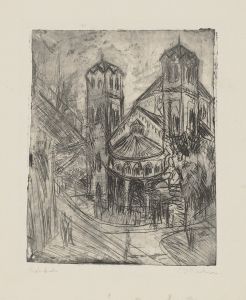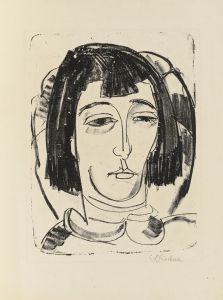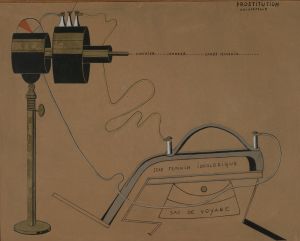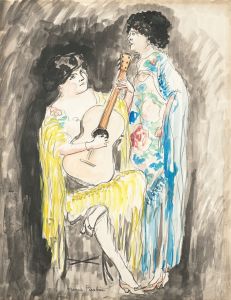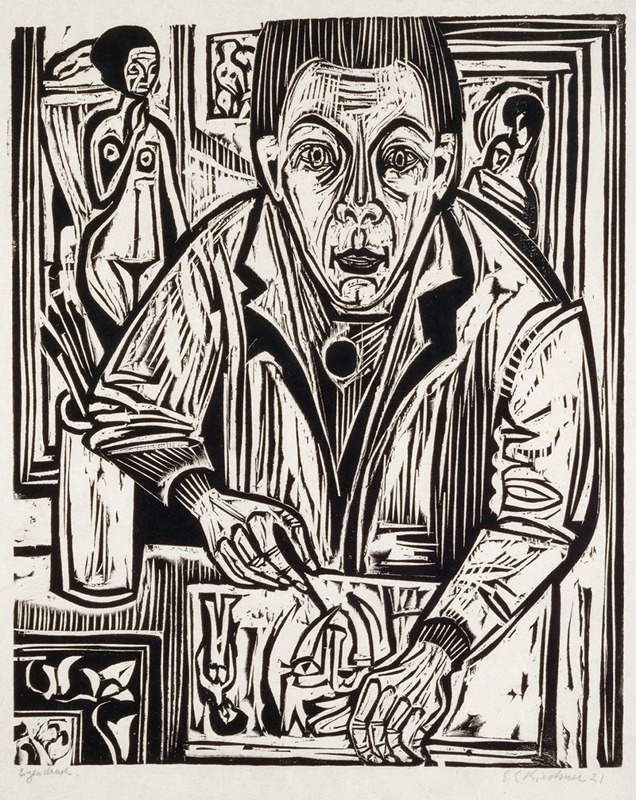
Selbstbildnis, holzschneidend
A hand-painted replica of Ernst Ludwig Kirchner’s masterpiece Selbstbildnis, holzschneidend, meticulously crafted by professional artists to capture the true essence of the original. Each piece is created with museum-quality canvas and rare mineral pigments, carefully painted by experienced artists with delicate brushstrokes and rich, layered colors to perfectly recreate the texture of the original artwork. Unlike machine-printed reproductions, this hand-painted version brings the painting to life, infused with the artist’s emotions and skill in every stroke. Whether for personal collection or home decoration, it instantly elevates the artistic atmosphere of any space.
Ernst Ludwig Kirchner's "Selbstbildnis, holzschneidend" (Self-Portrait, Cutting Wood) is a notable work by the German Expressionist painter and printmaker. Created in 1915, this self-portrait is an oil painting that reflects Kirchner's distinctive style and his exploration of identity and artistic practice during a turbulent period in his life.
The painting depicts Kirchner engaged in the act of woodcutting, a medium he frequently used in his printmaking. This self-referential subject matter highlights his dedication to his craft and his interest in the physical and creative processes of art-making. The composition is characterized by bold, angular forms and a vivid, expressive use of color, hallmarks of Kirchner's work and the broader Expressionist movement. His portrayal of himself as an artist at work underscores the centrality of art to his identity.
"Selbstbildnis, holzschneidend" was created during a particularly challenging time for Kirchner. In 1915, he volunteered for military service during World War I but was discharged due to a nervous breakdown. This period of personal and professional crisis deeply influenced his art, and the self-portrait can be seen as a reflection of his inner struggles and his attempt to assert his identity as an artist amidst the chaos of war and personal turmoil.
Kirchner was a founding member of Die Brücke (The Bridge), an influential group of German Expressionist artists formed in 1905. The group sought to break away from traditional academic art and embraced a more raw, emotional, and modern approach to artistic expression. Kirchner's work, including "Selbstbildnis, holzschneidend," embodies the ideals of Die Brücke, emphasizing emotional intensity, bold forms, and a connection to the artist's inner world.
The painting is also significant for its exploration of the relationship between the artist and his medium. By depicting himself in the act of woodcutting, Kirchner not only highlights his technical skills but also draws attention to the physicality and labor involved in the creative process. This focus on the artist's role as a craftsman aligns with the Expressionist movement's emphasis on authenticity and direct engagement with materials.
Today, "Selbstbildnis, holzschneidend" is recognized as an important example of Kirchner's work and a key piece within the Expressionist canon. It offers insight into the artist's personal struggles, his commitment to his craft, and his contributions to modern art. The painting is held in a private collection and continues to be studied and admired for its artistic and historical significance.





